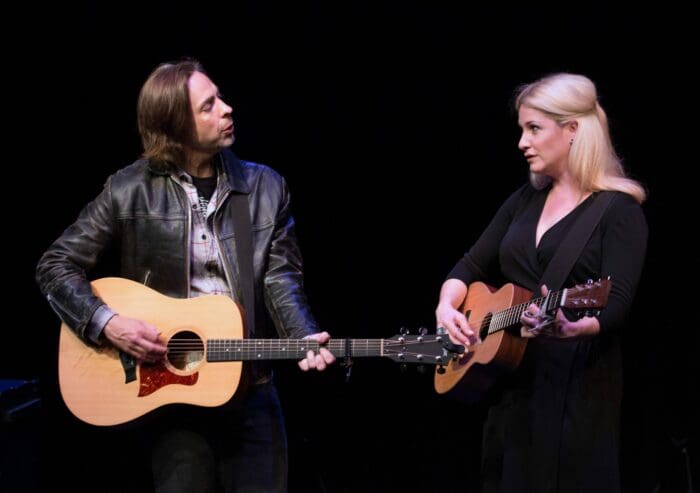
Leaving the Tarragon Theatre after Midsummer, I realized that the play had brought me through a full spectrum of emotions. Happiness, sadness, despair, joy, anxiety, envy, pity, and all of this unusually done, for the most part, through comedy.
At its heart, Midsummer is a play about desperation, albeit hidden in the package of a heterosexual love story. Two 35 year-olds, Helena and Bob, are both in an existential crisis, questioning what they’ve done with their lives, each ready to change their trajectory. Neither character is all that likeable. Helena (Carly Street) is a divorce lawyer; she’s a woman who drinks so heavily she ends up being late for her sister’s wedding, throws up on herself, and sends her nephew into a terrible fit. On the other side of the spectrum is Bob (Brandon McGibbon). Bob is known as “medium Bob” because he is unexceptional in every aspect. Boring is an understatement. He does have one unique quality, at least to a straight-laced audience, that he is a small time swindler, working on the fringes of the law and is involved in unsavory work. On paper, you don’t want to like these characters. On stage, it is a completely different story.
There are three elements that make these characters compelling: great actors, a uniquely structured play, and remarkable timing. As Helena, Carly Street is radiant. When she stepped on stage, there was no way to look away; her presence demands attention. If she stood on stage and smoked a cigarette for an hour, she could make it interesting. Even when she jumbled her lines, it really didn’t matter. Brandon McGibbon as Bob was more complicated. How can you be run-of-the-mill and yet engage an audience? McGibbon successfully walks this fine line. Within the first 5 minutes, it is clear who Bob is and yet you want to sit down and have a coffee with him.
The script (written by David Greig and Gordon McIntyre) is witty and delightful both in structure and dialogue. At the start of the play, the characters speak about each other and themselves in third person to the audience. At first, this fourth wall breaking is confusing, creating a strange separation between Helena and Bob the narrators and Helena and Bob the characters. The scene of Helena and Bob meeting plays three times, each time the narrator characters include different commentary about the hook up. This continues with Street and McGibbon moving between multiple characters- through minor on-stage costume changes- to enhance each character’s back and front story.
Graeme S. Thomson’s set is excellently imaginative, using only two chests, guitars and their cases. The chests turn into chairs, benches, tables; a guitar into a door; and the guitar cases into toilet bowls. The actors use the chests like Mr. Dressup’s Tickle Trunk, pulling costumes, bedding and other random articles to enhance the scene. The stage begins empty and quickly becomes littered with clothes, shoes, and other evidence of Helena and Bob’s life together.
The play’s full title is Midsummer (a play with songs) but the clunky transition that surround each number bring back memories of high school musical productions. This awkwardness is eased, however, by how well the performers’ voices blend together, capturing the unexpected strength of their chemistry.
